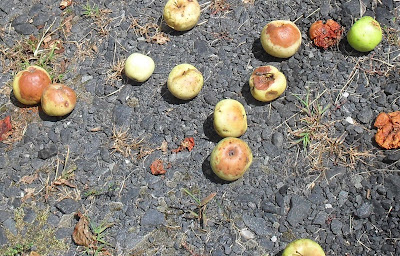
Part 2: Speaking
My husband and I once watched a documentary about a young man living on a small farm in China with his mother. The two lived in exile from the village, as the people disapproved that he was not killed at birth, since he was malformed. On the son’s shoulder, close to his neck, lived a vestigial twin. It consisted only of a nose and mouth connected to the young man’s nervous system. When he laughed, the eerie twin’s mouth widened and its tongue rose and fell, just like its host’s. When the young man cried, his twin’s mouth crumpled in silent mimicry of sobs. Somehow this never-to-be-forgotten image explains to me the function I expected of my fiddle – except that it was going to express my emotions in sound, not physical mimicry. The vision now seems like an immature expectation full of beginner’s hubris, but not without truth.
Working with fourth and fifth graders last spring, I would ask, “If you were a space man, how would you guess that a human could talk?” Well, humans have mouths – openings in their bodies. They also have lungs that inflate and deflate, so air passes through the throat, changing tones as the muscles in the vocal chords expand and contract. The tongue shapes words, cooperating with teeth, lips.
The fiddle can also talk, or sing, in that it has two openings, the sound holes. (To call them F holes made the kids snicker, but let’s forget about that.) The wind, or vibrating force, is created by drawing across the fiddle strings with the bow. That the bow is made of a wand and a horse’s tail made eyes wide. The sound of the note you want to make, I told them, comes from shortening the fiddle string by stopping the sound in different places with the fingers of your left hand, analogous to the work of the vocal chords. (Of course I didn’t use the word “analogous,” but struggled to show with my fingers how the vocal chords work.) The function of articulation is not by tooth and tongue and lips then, but by the strokes of the bow, controlled precariously by the fingers of the right hand. Are the motions of the bow choppy and short? Are they long and resonating? Hard, soft, medium pressure applied?
Because I believe in the energy centers of the body known as chakras, I appreciate the space that the fiddle occupies when played. The fiddle sits under the chin, protrudes from the body, and becomes an extension of the neck, throat and upper chest. In energetic terms, it lies close to the fifth chakra – that of vocalizing the soul’s work of receiving, interpreting, and then giving back information based on one’s unique experience, worship, perception. The position also hovers about the fourth or heart chakra, the warm energy field that transforms experience into nourishment and also allows us to love and be loved by others. The fiddle, then, is the little twin who is capable of broadcasting intense expression.
When I was new to Irish fiddling, and would tell people I thought I had a lot to communicate on the fiddle, they responded cynically. My husband suggested I tape record myself playing a jig with great emotion, then play it a second time shifting my attention to control of my motor skills, then listen to the difference. What he predicted was true: the controlled piece sounded much “better” because the force of emotion made my playing sloppy. Taking what is inside and projecting it is one thing, but preparing the message to be received and understood by others is another time consuming process. Like learning language, it is a long journey from using beginner’s words and phrases in order to voice basic needs to communicating ideas in complex word groups, conveying specific and detailed information. An even deeper layer of language is culture-specific, using colloquial terms readily understood by members of a community that shares physical, social, and historical references.
It is between two poles – the technical and the emotional -- I’ve had to bounce back and forth, over and over the years, while a river of information from listening to other players runs through my body/mind memory: tempo, phrasing and variation, tone, articulation. Emotion. But I’m always working toward creating a fiddle voice that represents my feeling- world, couched in my relationship to Irish traditional music.














